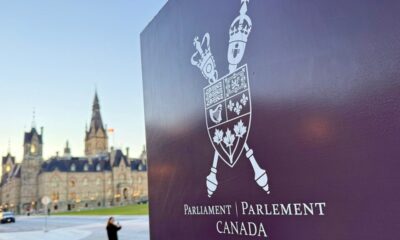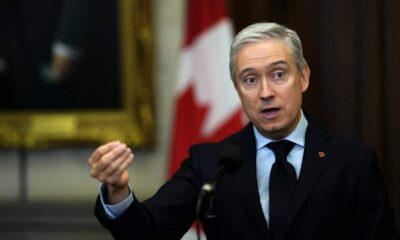Politics
Canadian Government Faces Pressure to Cut Inefficiencies

The Canadian government is under scrutiny as Finance Minister François-Philippe Champagne announces a target of 15 percent operational savings across the public service. This call for efficiency is reminiscent of past austerity measures and highlights the challenge of addressing inefficiencies within government departments.
Reflecting on a personal experience from the late 1990s, when the Canadian Food Inspection Agency (CFIA) was formed, the complexities of merging different departments revealed a culture of inefficiency. Within the CFIA, one employee, often referred to as the “olive green cardigan man,” epitomized the lack of clarity in roles. His presence and output went unnoticed, mirroring the concerns raised by current calls for reform.
Many within the public service are aware of the “dead wood” in their ranks—ineffective employees and unspent budgets hidden within various departments. Despite this awareness, past governmental efforts to streamline operations have often encountered resistance. For instance, during Stephen Harper‘s administration, the Royal Canadian Mounted Police (RCMP) was advised to make cuts, yet the proposals often targeted politically sensitive areas, making genuine reform difficult.
The question remains: what if the public service were subjected to the same standards as the private sector? If figures like Mark Carney—a former banker—were to apply their operational ruthlessness to public administration, the results could be drastic. The potential reductions could far exceed those seen during the austerity measures of the mid-1990s, led by Jean Chrétien and Paul Martin.
In a context where operational efficiency is crucial, a private sector approach might advocate for the elimination of entire departments or agencies. For example, entities like the CBC or regional development agencies could face significant cuts, alongside the reduction of public servants added under Justin Trudeau, which saw a 43 percent increase in the public workforce.
Fortunately for the public service, Carney is now in a political role rather than a corporate one. He is unlikely to wield the “chainsaw” approach characteristic of a hedge fund manager. Instead, he and Champagne are expected to adopt a more measured strategy, potentially relying on attrition and other less severe methods to achieve their savings targets.
The upcoming budget, described as “once in a generation,” is anticipated to lean more towards Harper’s fiscal conservatism than the policies of Chrétien and Martin. Carney’s recent remarks suggest a dual commitment to “generational investments” while also pledging to “spend less in order to invest more.” This contrasts sharply with the realities faced by many Canadians, who are increasingly concerned about cost-of-living issues and housing shortages.
As the government navigates these challenges, the public service’s ability to adapt will be crucial. If inefficiencies persist and the public continues to experience economic pressures, the next leadership may take a far more aggressive stance on cuts. For now, it is in the interest of public service employees to address inefficiencies proactively and demonstrate their value to avoid future significant reductions in workforce.
-

 World4 months ago
World4 months agoScientists Unearth Ancient Antarctic Ice to Unlock Climate Secrets
-

 Entertainment4 months ago
Entertainment4 months agoTrump and McCormick to Announce $70 Billion Energy Investments
-

 Lifestyle4 months ago
Lifestyle4 months agoTransLink Launches Food Truck Program to Boost Revenue in Vancouver
-

 Science4 months ago
Science4 months agoFour Astronauts Return to Earth After International Space Station Mission
-

 Technology2 months ago
Technology2 months agoApple Notes Enhances Functionality with Markdown Support in macOS 26
-

 Top Stories3 weeks ago
Top Stories3 weeks agoUrgent Update: Fatal Crash on Highway 99 Claims Life of Pitt Meadows Man
-

 Sports4 months ago
Sports4 months agoSearch Underway for Missing Hunter Amid Hokkaido Bear Emergency
-

 Politics3 months ago
Politics3 months agoUkrainian Tennis Star Elina Svitolina Faces Death Threats Online
-

 Politics4 months ago
Politics4 months agoCarney Engages First Nations Leaders at Development Law Summit
-

 Technology4 months ago
Technology4 months agoFrosthaven Launches Early Access on July 31, 2025
-

 Top Stories1 week ago
Top Stories1 week agoFamily Remembers Beverley Rowbotham 25 Years After Murder
-

 Top Stories4 days ago
Top Stories4 days agoBlake Snell’s Frustration Ignites Toronto Blue Jays Fan Fury





















